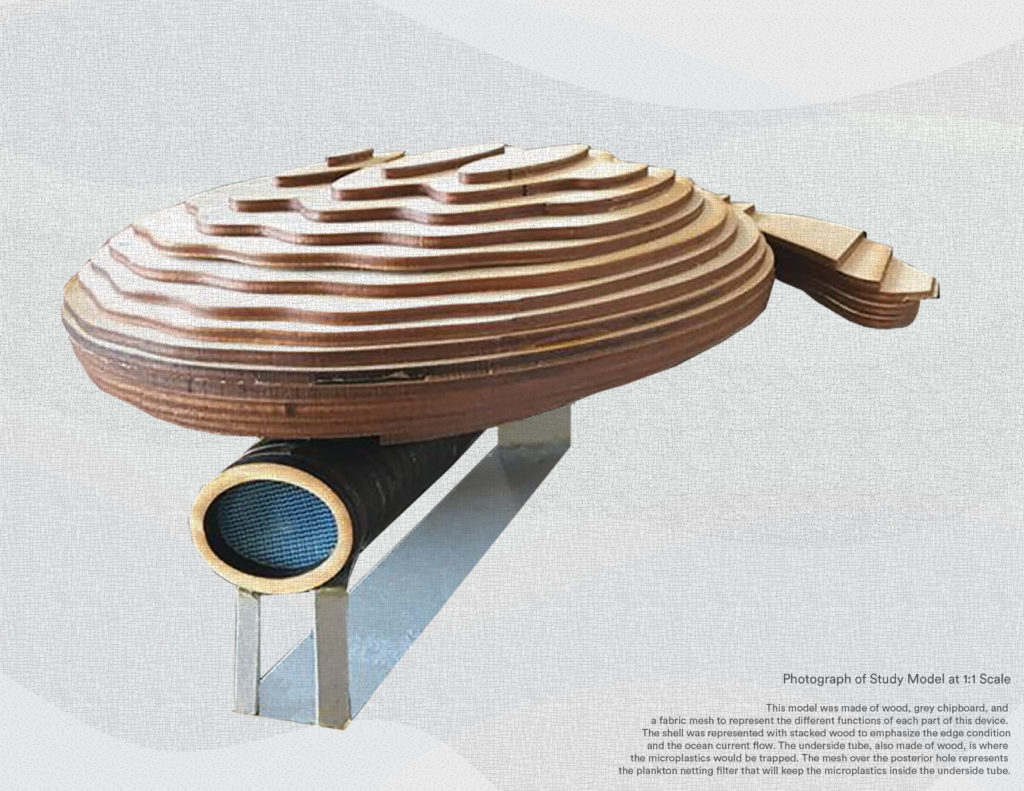
Project team: Tia LaMore, Reem Makkawi
Course: Bioinspired Design, spring 2018
Flipper Filter is a bioinspired concept for an economically and environmentally friendly device designed to help clean the oceans of microplastics and protect marine fauna. As a hydrodynamic device that moves through the ocean, it filters out microplastics that endanger marine life (and potentially humans as well). Flipper Filter’s structural ridges are based on the anatomy of leatherback sea turtles; this design allows for more efficient maneuverability in the water, as its dorsal longitudinal ridges are misaligned from streamlines to generate streamwise vertices, increasing hydrodynamic performance in the open ocean.
Flipper Filter also takes inspiration from filter-feeding baleen whales. Just as a baleen whale takes in ocean water and uses its tongue to capture food and create a high-pressure system to release water, Flipper Filter will receive ocean water containing microplastics and as the water flows both to the posterior end and laterally to the microplastic filters, it will trap the polluting microplastics. When water containing microplastics flows to the back of the device — where a microplastic filter made of plankton netting catches the tiny pollutants — pressure begins to build up. As pressure builds, the flow is directed in the lateral direction and out of the bottom openings (also covered with plankton netting), trapping the microplastics within the device.

Photograph of study model at 1:1 scale: This model was made of wood, grey chipboard, and a fabric mesh to represent the different functions of each part of the device. The shell was represented with stacked wood to emphasize the edge condition and the ocean current flow. The underside tube, also made of wood, is where the microplastics would be trapped. The mesh over the posterior hole represents the plankton netting filter that will keep the microplastics inside the underside tube.
Want to learn more about Flipper Filter and its designers? Check out:
Tia LaMore’s Portfolium entry on Flipper Filter